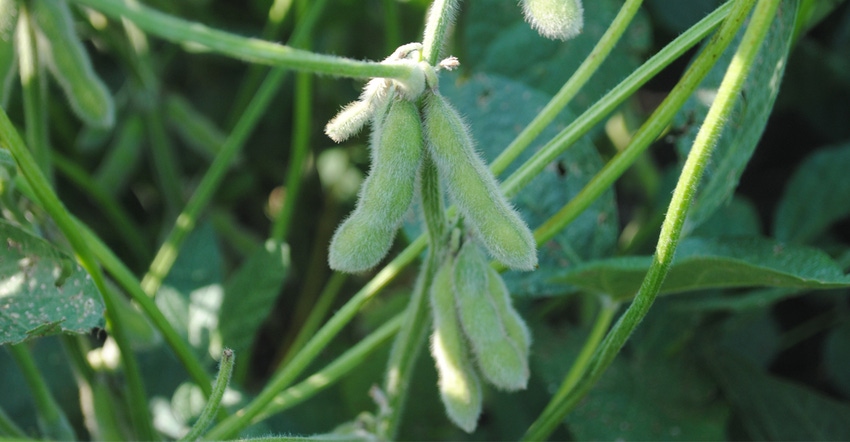
For many in Iowa, 2020 was not a great cropping season. Many — particularly in western Iowa — were affected by D2 to D4 level drought, followed by the Aug. 10-11 derecho.
However, for some pockets of Iowa, timely rains brought some much-needed relief from drought. For Casey Westergard, who farms near Ireton in northwest Iowa, a 5-inch rain in the middle of July made all the difference. This and Westergard's management were key ingredients in the milestone he reached when he harvested 102-bushel-per-acre soybeans last year.
"There was a 5-by-5-mile area that got rain. All the surrounding areas were dry, all year long. This particular field got a 5-inch rain in the middle of July. It was real good timing," Westergard says. "Overall, the entire field was pretty strong by itself. On the test spot, we take the best part of the farm. On the rest of the 80-acre field, we averaged from low to high 70s."
However, Westergard's management set the foundation to take advantage of this timely rain.
"I've been gradually increasing yields for the last 10 years. Last year I had a little setback because it was dry, and things didn't work as well for every field," he says. "Every year, I do a lot of different little trials, and try new things on my own and some through the local co-op. You've got to be willing to try new things and interpret the results. At the end of the season, it's easy to focus on just getting done with harvest. You've got to look at the data and then implement what you find."
Setting a foundation
In 2020, it started with planting the right variety, Asgrow AG25X9, at the right population. Westergard typically runs two planters at once, allowing him to put soybeans in the ground at the same time corn is planted — usually starting the last week of April.
"I plant about 140,000, and ideally we'll have a final stand count of 125,000 or more. We plant a little early, so not all of them are going to germinate. If we can plant in that range, we've usually got enough of a stand to finish strong," he says. "The high-yielding field was a 2.5 maturity rating, but I go from 1.9 all the way up to a 2.9, and kind of spread the risk out. That expands that window."
"We try to get it in that 1 inch of depth, so it doesn’t take so much energy to come out of the ground. Then we do fungicide and insecticide on seed treatments," he adds. "It's a systems approach. We get it planted early, choose the right hybrid, try keep the field clean and healthy all through the season. It's a systems approach. You can't just do one step and forget about the rest."
Building fertility
On the field that Westergard reached the 102-bushel-per-acre milestone, he's been building his soil phosphorus and potassium levels gradually through manure applications.
"On the fertilizer side, on this particular piece, we are privileged to have a local sheep producer nearby that provides sheep manure every year. So the fertility levels are high on this piece of ground. We do put a little P, K and N out there. We also put on a low rate of hog manure," he says. "Usually, with the last application of glyphosate, we put some micronutrients in with that to keep plants healthy. We've played with some biologicals, but we haven't fully implemented it."
Moving forward, Westergard plans to continue building phosphorus levels on deficient areas, as well as experimenting more with biological applications and population trials.
"I think phosphorus levels are probably my biggest challenge," he says. "I'm also going to split up my micronutrient applications between my last application of glyphosate and putting some in with my last fungicide application. I'm going to play with some more biologicals this year. We're going to try some different tests on it. We're going to play with populations to determine whether we can bump them up or bring them down a little more. You've got to have all those plants working together."
"In 2019, my high was 85, but before that, we were yielding in the 90s. I've been doing the yield contest for about 10 years now, and every year has gradually increased," he adds. "A lot of it is the little trials we do off the side. We might spend about $5 more per acre and might get 2 more bushels per acre. What doesn't work, we throw out, and what works, we keep in the mix. It's trial and error.
"I receive a lot of advice and support from my local seed dealer and agronomist. It really is a team effort to produce the kinds of yields that are in demand," he says.
About the Author(s)
You May Also Like






